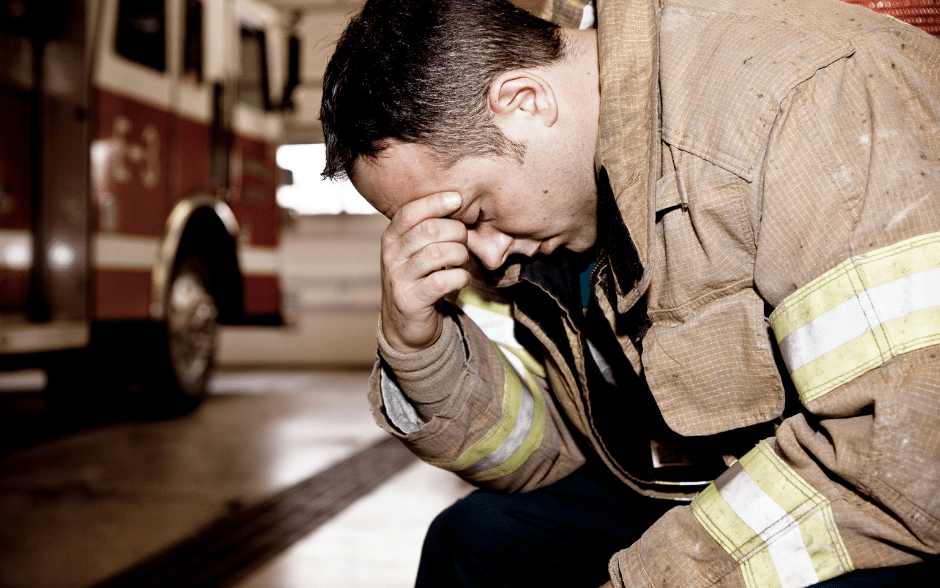In the demanding world of first responders, stress resilience and tactical excellence are crucial for effective performance. One innovative training method that has gained significant attention is Heart Rate Variability (HRV) training. HRV refers to the variation in time intervals between consecutive heartbeats, which can provide valuable insights into an individual’s physiological and psychological well-being.
Let’s explore the role of HRV training in first responder training programs and how it can improve performance and resilience.
Understanding HRV and its impact on training
HRV is a measure of the autonomic nervous system’s ability to adapt to different situations. It reflects the intricate balance and back-and-forth play between the sympathetic (fight-or-flight) and parasympathetic (rest-and-digest) branches of the nervous system. High HRV is often seen as indicative of a flexible and resilient autonomic nervous system, while low HRV suggests a more rigid and stressed state.
When it comes to training, HRV can serve as a powerful tool for optimizing performance and recovery. By monitoring HRV, first responders can assess their readiness to train, identify signs of overtraining, and adjust their training programs accordingly. HRV training helps individuals regulate their stress response, promoting better recovery, mental clarity, and overall well-being.
Benefits of HRV training for first responders
The benefits of HRV training for first responders are numerous. Firstly, it helps in managing stress effectively. By training the autonomic nervous system to respond more adaptively to stressors, first responders can maintain composure and make better decisions in high-pressure situations.
Additionally, HRV training puts more emphasis on keeping an eye on sleep quality and recovery, reducing the risk of burnout and improving long-term performance.
Furthermore, HRV training improves overall health and well-being. Studies have shown that high HRV is associated with better cardiovascular health, improved immune function, and increased cognitive performance. By incorporating HRV training into their programs, first responders can make more informed decisions to enhance their physical and mental resilience, leading to improved job satisfaction and quality of life.
The science behind HRV and its connection to stress resilience
The science behind HRV lies in the complex interplay between the autonomic nervous system, heart function, and the brain. HRV reflects the dynamic balance between sympathetic and parasympathetic activity, which is influenced by various factors such as age, fitness level, stress levels, and the individual’s environment.
Research has shown that individuals with high HRV exhibit better stress resilience. They are better equipped to handle stressful situations and recover more efficiently afterward. HRV training aims to improve this resilience by teaching individuals how to regulate their autonomic nervous system through specific techniques and exercises, such as breath work or mindfulness practices.
How to measure and interpret HRV
Measuring and interpreting HRV provides valuable insight into understanding an individual’s stress resilience and recovery capacity. There are several methods available to measure HRV, ranging from simple smartphone apps to specialized wearable devices, such our Biostrap wrist-worn devices.
Biostrap captures beat-to-beat intervals and clinically reliable HRV data and provides an advanced analysis of one’s autonomic function.
To interpret HRV, it is important to understand the different metrics involved. These include time-domain measures such as SDNN (Standard Deviation of Normal-to-Normal intervals) and frequency-domain measures such as LF (Low Frequency) and HF (High Frequency) power. Each metric provides unique insights into the autonomic balance and can be used to track changes over time.
Factors influencing HRV and ways to improve it
Several factors can influence HRV, including age, fitness level, stress, environment, and sleep quality. Age generally leads to a decrease in HRV, while regular exercise and physical fitness can improve it. Chronic stress, on the other hand, research suggests can reduce HRV and hinder recovery.
To improve HRV, first responders can adopt various strategies. Regular aerobic exercise, such as running or swimming, has been shown to increase HRV.
Stress management techniques, including mindfulness meditation and deep breathing exercises, can also boost HRV. Prioritizing quality sleep and maintaining a healthy lifestyle with a balanced diet further contribute to optimal HRV levels.
HRV training techniques for first responders
HRV training techniques for first responders involve a combination of physical and mental exercises designed to enhance stress resilience and recovery. These techniques aim to improve the autonomic balance and teach individuals how to regulate their physiological responses.
Breathing exercises are a fundamental component of HRV training. Techniques such as coherent breathing, or box breath, where individuals breathe in and out for equal counts, promote parasympathetic activation and enhance HRV.
Progressive muscle relaxation and guided imagery exercises can also help first responders achieve a state of deep relaxation and bring HRV back and even beyond their baseline.
In addition to these techniques, biofeedback training can be a valuable tool. Biostrap Kairos, for example, offers a clinically proven way to quantify nervous system resilience and rate of recovery.
By utilizing wearable technology, first responders can receive real-time feedback on their HRV and track their progress over time.
The role of HRV in addressing post-traumatic stress disorder
Post-traumatic stress disorder (PTSD), is a significant concern among first responders. HRV training can play a crucial role in addressing this condition by promoting stress resilience and recovery.
Research has shown that individuals with PTSD often have lower HRV, indicating a dysregulated autonomic nervous system. By engaging in HRV training, first responders can improve their autonomic balance, reducing the risk of developing PTSD symptoms.
HRV training provides them with the tools to manage stress effectively, prevent burnout, and maintain mental well-being.
Case studies and success stories of HRV training in first responder programs
Numerous case studies and success stories highlight the effectiveness of HRV training. One such study conducted with a group of young adults showed that HRV training significantly reduced perceived stress levels and improved cognitive performance. Participants reported feeling more resilient and better equipped to handle the demands of their jobs.
Another study involving police officers demonstrated that resilience training reduced physiological and psychological stress and increased peacefulness and vitality. These success stories underscore the potential of HRV training in optimizing first responder performance and fostering psychological resilience.
Professional resources and courses for HRV training
For first responders interested in incorporating HRV training into their programs, there are numerous professional resources and courses available. These resources provide in-depth information on HRV, training techniques, and practical applications.
Organizations such as the HeartMath Institute and the International Society for Autonomic Neuroscience offer comprehensive training programs and certifications in HRV training. These programs equip first responders with the knowledge and tools necessary to implement HRV training effectively.
The future of HRV training in first responder programs
As the demands on first responders continue to increase, the importance of stress resilience and tactical excellence cannot be overstated. HRV training offers a promising solution to enhance performance, promote recovery, and address the physiological and psychological stress they face.
By incorporating HRV training into their programs, first responders can improve their stress resilience, decision-making skills, and overall well-being. The science behind HRV and the numerous benefits it offers make it a valuable tool for optimizing first responder training and performance.
As technology continues to advance, wearable devices like Biostrap Kairos provide real-time feedback and quantifiable data, making HRV training more accessible and effective. With the support of professional resources and training programs, first responders can harness the power of HRV to excel in their demanding roles.
Choose Biostrap Kairos for a clinically proven way to quantify nervous system resilience and rate of recovery.



